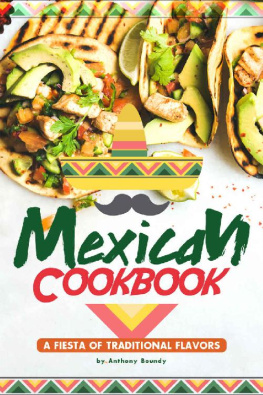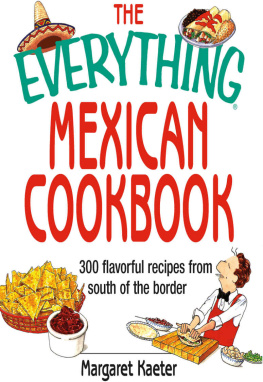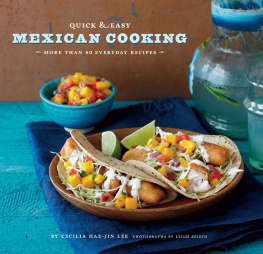GRACIAS
Making this book was such an amazing adventure. I would like to thank all of the people who work so hard in our restaurants every day behind the scenes, making Nopalito the special place it is without asking for even an ounce of credit. I want to thank my partners, especially Laurence Jossel, my chef partner, whom I was so lucky to meet when I first arrived in San Francisco, and who gave me the opportunity to do what I now love doing most. Thank you for believing in me and giving me many opportunities, but most of all the chance to cook the food on which I was raised. You have always pushed me to do things that I didnt think I could do, and this book is just one example. I also want to sincerely thank our other partners, Jeff and Ally, for being a huge part of my work life as well as my life outside work. You three are now a part of my family.
I am grateful for all of the people who have made Nopalito possiblewho were a part of it for even just a day, and of course those who have been with us since day one: Lidia Guzman, Sergio Guzman, Benjamin Guzman, Jose Guadalupe, Luis Chan, Gabino Aguilar, Irma Bacab, Christian Maldonado, and my former co-chef, Jose Ramos. I am sure I have forgotten some names, but you know who you are.
I also want to thank my friend and coauthor, Stacy Adimando, for writing so beautifully, and for taking this cookbook journey with me. Also, the good people at Ten Speed Press and photographer Eva KolenkoI owe it to you for making this book so beautiful.
Thanks sincerely to all of the hard-working recipe testers who went above and beyond to make sure the recipes were the best they could be. We are indebted to you.
Finally, I really want to thank my family, who have always been there for me in every moment, even the times I was working too many hours and couldnt be with them at home. I love you, and you mean everything to me. And to my family in Mexico, especially my momI had to leave her at such a young age, and she has always said she wished she could have given me more or sent me to college. Mom, I want to tell you just one more time: I did get all that I needed, and so much more.
Thank you, everyone, from the bottom of my heart, for making this possible.
Gonzalo
ABOUT THE AUTHORS
GONZALO GUZMN was born in Veracruz, Mexico, and came to the United States as a young child. He began working at Kokkari restaurant in San Francisco as a dishwasher, but was soon promoted and went on to work his way up through the ranks at Boulevard, Chez Nous, and Nopa. In 2009, he partnered with Laurence and Allyson Jossel and Jeff Hanak to open Nopalito on Broderick Street. Guzmn is now the chef of both the original Nopalito as well as a second location on Ninth Avenue, just outside Golden Gate Park.
STACY ADIMANDO is a food and travel journalist, and the test kitchen director at Saveur magazine. Her work has been published by NPR, Bon Apptit, Cond Nast Traveler, Food & Wine, Forbes, and many more. She lives in Brooklyn, New York.
Background and Basics: From Mexico to Your Kitchen
IN THE MEXICAN KITCHEN
Many of the food traditions of Mexico historically revolved around three very simple pillars:
We ate mostly what we could grow ourselves.
We preserved what we grew, through drying, pickling, and other techniques.
We used all parts of everything we had access to, from the husks of the corn cobs to the fat from the animals.
We had little choice but to eat ingredients that were in season or to eat food that was grown locally. These options were based not on values but on necessity, as it was all many of us could afford. If you look at it this way, the key ingredients and ideas of Mexican cooking will seem like mostly common sense, and they are really not hard to understand or intimidating to master. Still, introducing them into your kitchen can open up a whole new world of flavors.
There are some cuisines that tout simplicity and integrity of ingredients as important above all else, and while Mexican ingredients may seem simplistic, what surprises many people about cooking authentic Mexican food is the intricacy, variety, and layers of flavor involved. For instance, the drying, then burning of chiles; the soaking and grinding of corn into masa; the blending of spices and herbs together to create a balanced salsa or molethey all contribute to a nuanced and layered characteristic of the cuisine. Mexican food is, at heart, a labor-intensive style of cuisine from a hardworking people. To me, it is far too rare to see a restaurant or a home cook go the extra mile to transform simple ingredients, and that is why I felt inspired to open Nopalitoand to write this book.
Another part of the inspiration was to offer what I think is a glimpse into the true spirit, roots, and flavors of regional Mexican cooking. In the United States there is this idea that all Mexican meals start with chips and salsa, and that everything is laden with lard or cheese and comes with a side of rice and beans. But throughout my childhood in Mexico, our tables were spread with many dishesmost of them fresh, colorful, and inspired by what came straight from the sea and the land that day. The dishes that we ate in our homes every day are alive and well in these pages.
IN THE NOPALITO KITCHEN
When I first moved to San Francisco, I ate at one Mexican restaurant after another in search of something similar to the foods I grew up eating. I couldnt get used to the fact that everyone around me was buying premade tortillas in stores, or that burritos (which to me are not true Mexican food) seemed to dominate every menu.
When we decided to open Nopalito, it took me and my then co-chef months of thought and sourcing to figure out how to uphold all the from-scratch processes of authentic Mexican cooking that are so fundamental to the cuisine. We were obsessed with the idea of keeping things true to Mexico while making sure we were sourcing the best, most flavorful, and freshest local produce from California and nearby. Im amazed we have been able to do so many of the things that are important to old-school Mexican cuisine, like grinding our own (always organic) corn from scratch every day, making queso fresco from scratch using local organic milk, and baking our own sandwich rolls in our restaurant kitchen each morning. It continues to mean eating by the seasons like we did in Mexico, and making sure our customers are too, never serving out-of-season tomatoes or subpar avocados just because people expect them on a Mexican menu.
Just as dishes with the same name in Mexico are made in a subtly different way in every home, town, and region, at Nopalito I have made some of my own adaptations and changes to traditional dishes to help make the best use of local ingredients and keep them up to the standards of the people of this wonderfully food-conscious region we live and work in, without misrepresenting the cuisine I grew up with. Whereas Mexicans often cook with a throw-everything-in-the-pot mentality, as a chef I can now apply some more thoughtful techniques to the cuisine of our grandmothers (and I dont think they would mind too much). Opening Nopalito was my first opportunity to really think about using chef techniques to embrace and enhance the nostalgic meals of Mexico.
Its funny to think I came all the way to Northern California only to end up doing what my mama did at home in Mexico. But I do pride myself in knowing that even if she were to walk through the door of Nopalito tomorrow, she would recognize every last dish from our menu, and most of the ingredients we are using. She, my
Next page
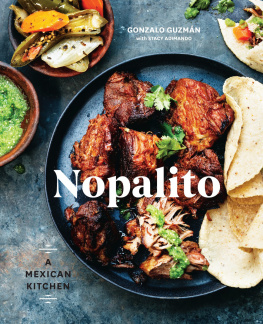

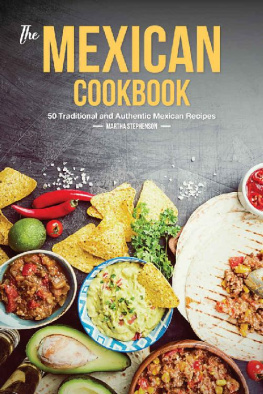
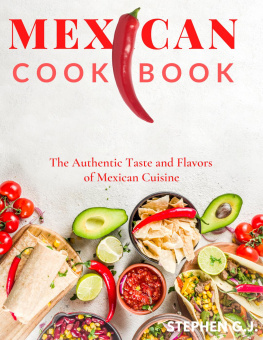
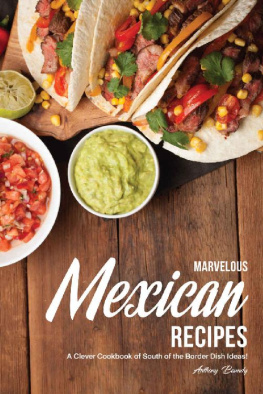
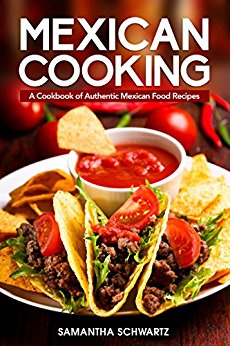
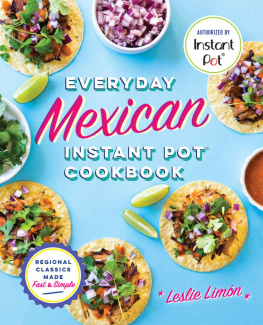
![Avery Moore - Mexican Cookbook 365: Tasting Mexican Cuisine Right In Your Little Kitchen! (Best Mexican Cookbook, Mexican Dessert Cookbook, Slow Cooker Mexican Cookbook, Mexican Salsa Cookbook) [Book 1]](/uploads/posts/book/288399/thumbs/avery-moore-mexican-cookbook-365-tasting-mexican.jpg)
